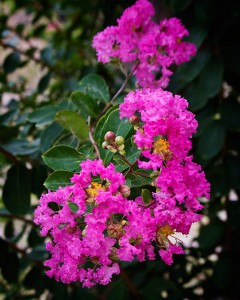 Now is about the time of year that you see “landscapers” attacking crape myrtles with their pruning shears like the trees might attack them if they left even the tiniest of branches. The practice is called “topping” and its has taken over good landscape practices and replaced them with this cruel joke of pruning. Whispering Springs Nursery is going to let you in on the secret to good pruning practices for crape myrtles.
Now is about the time of year that you see “landscapers” attacking crape myrtles with their pruning shears like the trees might attack them if they left even the tiniest of branches. The practice is called “topping” and its has taken over good landscape practices and replaced them with this cruel joke of pruning. Whispering Springs Nursery is going to let you in on the secret to good pruning practices for crape myrtles.
Why People Top
Topping crape myrtles has become so common place that it may be more out of place to see a crape myrtle that has been properly pruned! Many people top because they have come to believe the myth that it encourages blooming, the tree has grown too large for its space, or they simply see their neighbors doing it and feel that they should follow suit. None of these are good reasons to top your crape myrtles.
Proper Plant Selection
Crape myrtles come in a wide variety of cultivars. From dwarfs to giants, this versatile plant is used in most southern landscapes for its year round beauty – beautiful blooms all summer and peeling bark and elegant form through winter. There have been cultivars of crape myrtles that will fit in just about any space. They come is both bush and tree sizes. Making sure that you are planting the right cultivar for the area you have is the essential first step in good pruning practices.
Good Pruning
Crape myrtles typically only need a light pruning – not the heavy pruning of the topping practice. Remove defective or dead branches as soon as you see them. You can also remove lateral branches, small twigs, or branches in the center of the plant to create more open space for sun and air movement during the plant’s dormant time, late winter and early spring. Also, as a young plant is maturing, you can prune away all but the three to five strongest limbs growing from ground level. As it develops into a tree, you can remove the lower limbs to encourage the plant to grow upwards instead of outwards.



